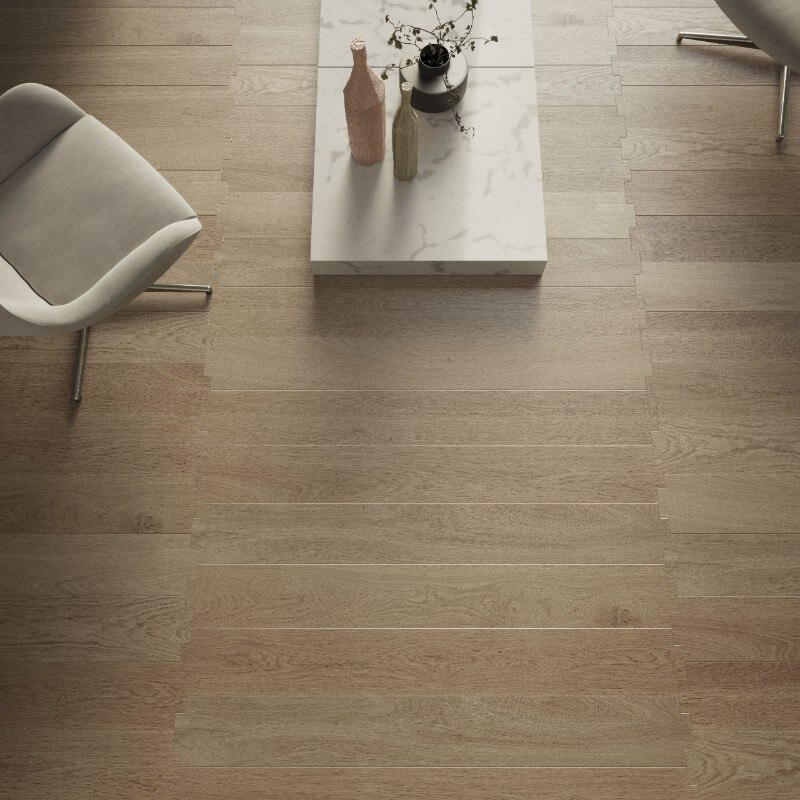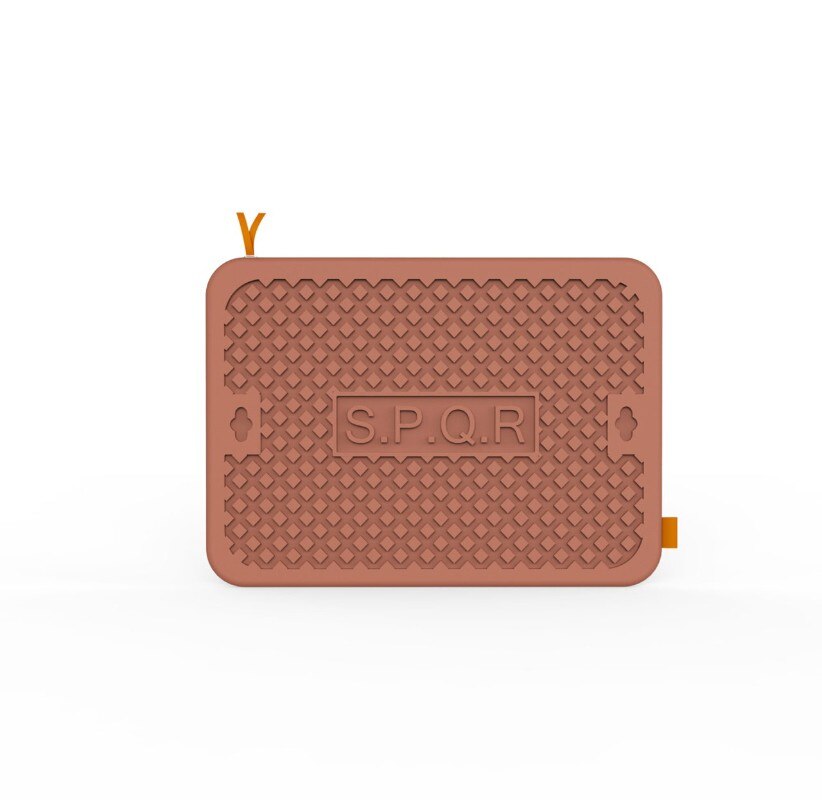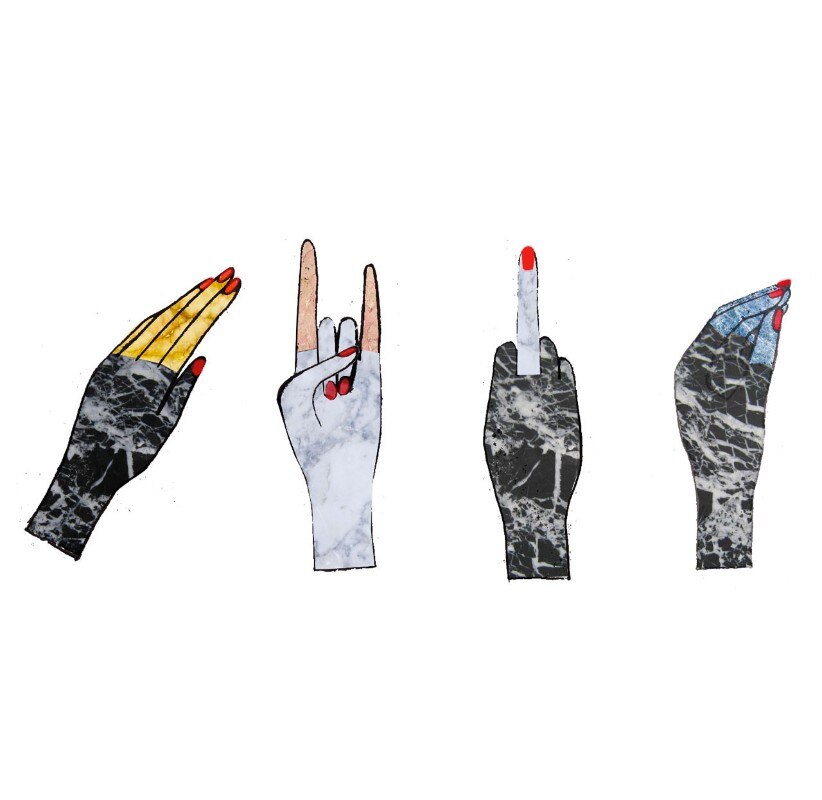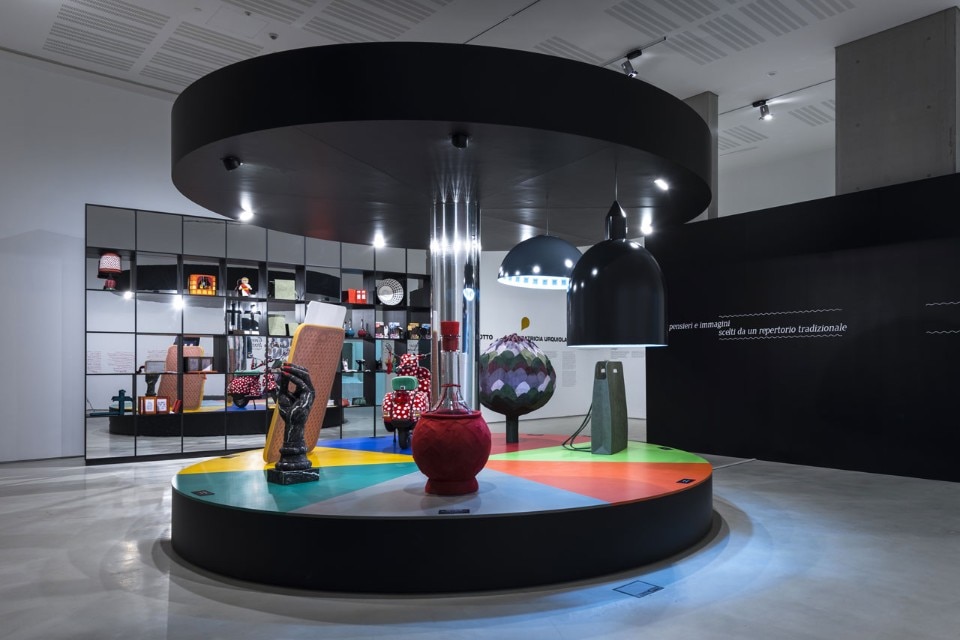

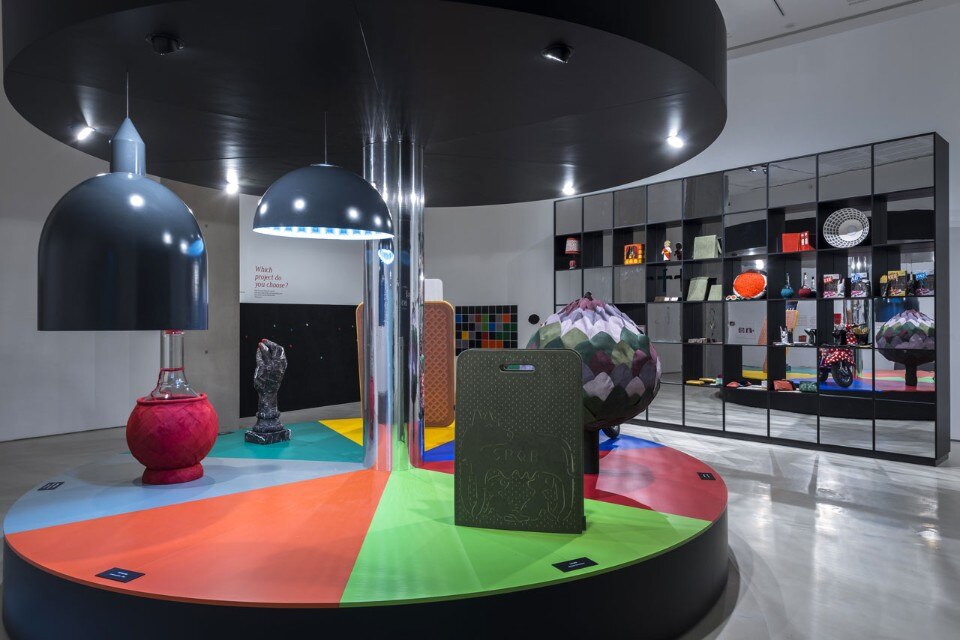
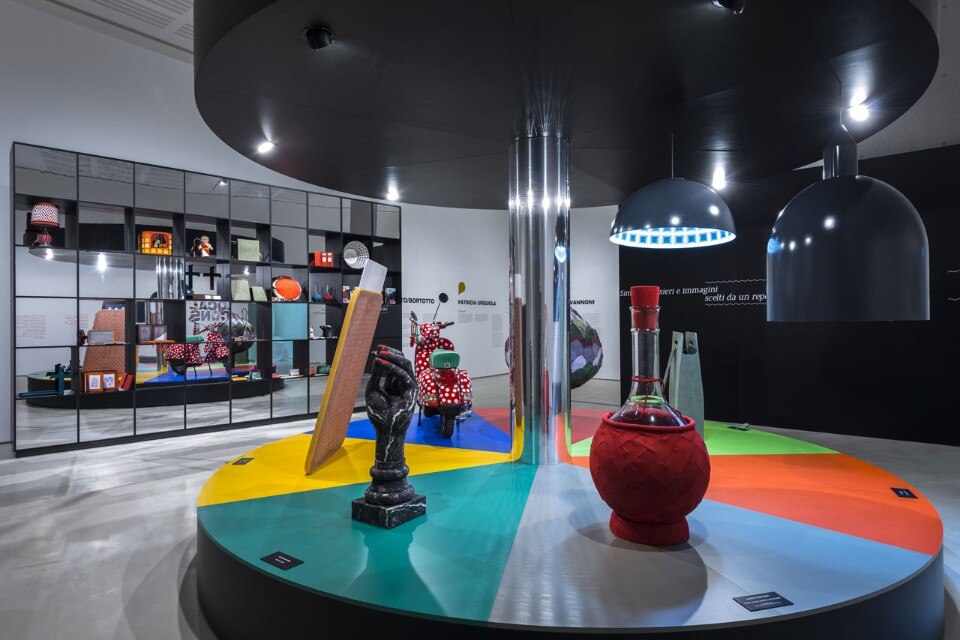
Gentucca Bini’s Saluti da Roma is a glove collection, for which the fashion designer has also developed the perfect packaging, reproducing typical Roman (Italian?) hand gestures in a brilliant oxymoron of a marble-like texture and red nail polish.
The Lanzavecchia+Wai duo have created two fine Cupoloni lampshades decorated on the inside with architectural friezes of the domes of St Peter’s and the Pantheon, which in this material develop a 3D effect.
Marta Laudani and Marco Romanelli express their sophisticated take on the sacred/profane pairing via the circus, notebook, cross and wine bottle – beautiful.
Paola Navone applied Alcantara to the most typical memory of any Rome holiday: a red/white polka-dot Vespa with a green seat. This Italian Pop icon has already been promised to the Piaggio museum in Pontedera.
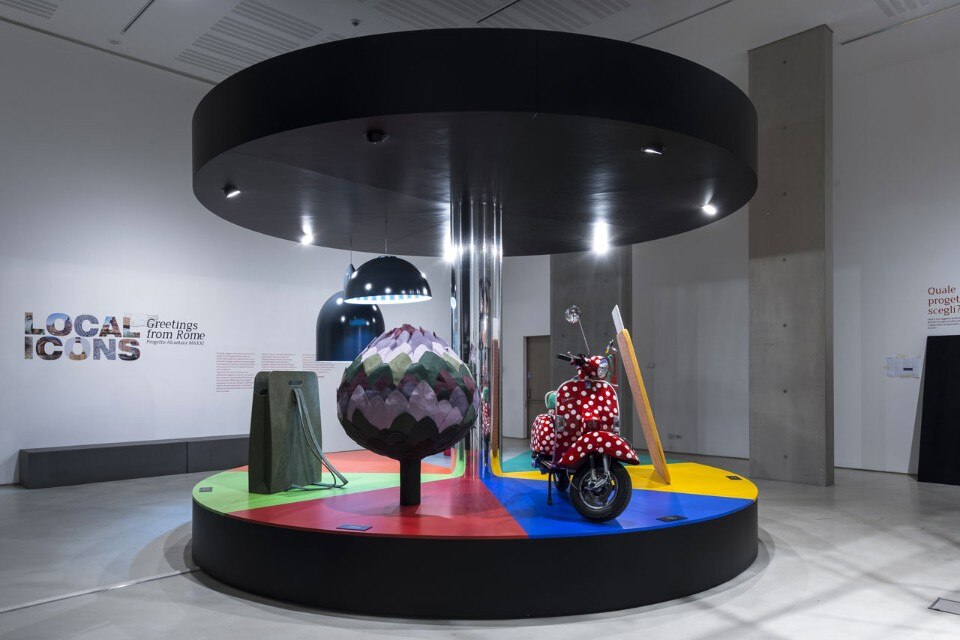
Stefano Giovannoni combined ancient legend with modern-day icon in a collection of smartphone, tablet and computer cases featuring the She-Wolf feeding the twins, achieved with a play of perforations and laser (again, old technology revisited).
Patricia Urquiola also thought of cases and came up with an tongue-in-cheek interpretation of the manhole cover that has unwillingly become rooted in the Roman subconscious, a reminder of the street surface-sound connection. Domitilla Dardi explains: “Renato Nicolini’s Estati Romane initiative brought us Romans a great sense of social belonging and cultural discovery of our city when Rome’s manholes, linked to monumental sewer works dating from Ancient Roman times, became metaphysical music emissaries. Walking down the street, you suddenly heard sounds without knowing where they were coming from. Today, we carry music around on our tablets and so Urquiola’s tablet case, shaped like a street manhole cover, is almost a nostalgic revival.”
Finally, the artichoke, rosary and Julius Caesar – conviviality, church and theatre again but also the typical local irreverence that here really does dress the Emperor as a puppet.
Maxi versions of some of the objects, on show until 7 June, feature on a large merry-go-round that joyfully greets Roman visitors (original and acquired), tourists (from the rest of Italy and abroad), families (many), travellers and commuters. We await the next phase of this fun project which will probably focus on European icons.

until 7 June 2015
LOCAL ICONS. Greetings from Rome
curated by Domitilla Dardi and Giulio Cappellini
MAXXI Rome
Sala Carlo Scarpa

The New Brevo House by Pedrali
Brevo has given its Parisian headquarters, La Maison Brevo, a major makeover, prioritizing innovation and employee well-being for its 400 staff members. The furnishings, curated by Pedrali, transform the 3,000 sq m of interior and exterior space into dynamic, stimulating environments that foster collaboration and diverse work styles.


